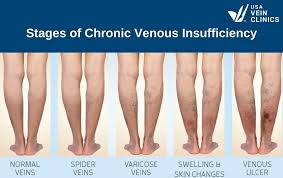Understanding Chronic Venous Insufficiency: Causes and Treatments

Introduction
Chronic Venous Insufficiency (CVI) is a medical condition affecting the veins in the legs, leading to poor blood flow back to the heart. It is a significant health issue that can cause discomfort and severe complications if left untreated. With millions affected worldwide, understanding CVI is crucial for prevention and management, particularly for individuals with risk factors such as obesity, age, or a history of venous problems.
What is Chronic Venous Insufficiency?
CVI occurs when the veins fail to efficiently return blood from the legs to the heart. This insufficiency can lead to swelling, pain, skin changes, and venous ulcers. The condition is often a result of damaged vein valves that allow blood to pool in the lower extremities, which can escalate into more serious vascular issues.
Causes and Risk Factors
The most common causes of CVI include:
- Ageing: ligaments weaken over time, leading to vein issues.
- Obesity: excess weight puts additional pressure on leg veins.
- Pregnancy: hormonal changes and growing uterus can affect vein integrity.
- Previous blood clots: history of deep vein thrombosis can harm vein function.
Additionally, prolonged standing or sitting and a family history of venous disease can increase the risk of CVI.
Symptoms
Individuals suffering from chronic venous insufficiency may experience a variety of symptoms:
- Swollen legs or ankles.
- Pain or a feeling of heaviness in the legs.
- Itching or skin irritation.
- Varicose veins and discoloured skin.
- Ulcer formations on the skin.
Early detection and treatment are essential to prevent the worsening of these symptoms.
Treatment Options
There are various treatments available for managing chronic venous insufficiency:
- Compression Therapy: Wearing compression stockings can help improve blood flow and reduce swelling.
- Medications: Certain medications can alleviate symptoms and prevent complications.
- Lifestyle Changes: Weight management, regular exercise, and elevating the legs can significantly enhance venous health.
- Surgery: In severe cases, surgical options such as vein stripping or sclerotherapy may be necessary to remove or close off problematic veins.
Conclusion
Chronic Venous Insufficiency is a significant health concern that can lead to serious complications if not addressed properly. Awareness of its causes, symptoms, and available treatments is imperative for those at risk. As healthcare providers continue to develop new and effective therapies, those suffering from CVI can explore various options to manage their condition effectively. Early detection and proactive measures can vastly improve the quality of life for individuals affected by this ailment.









